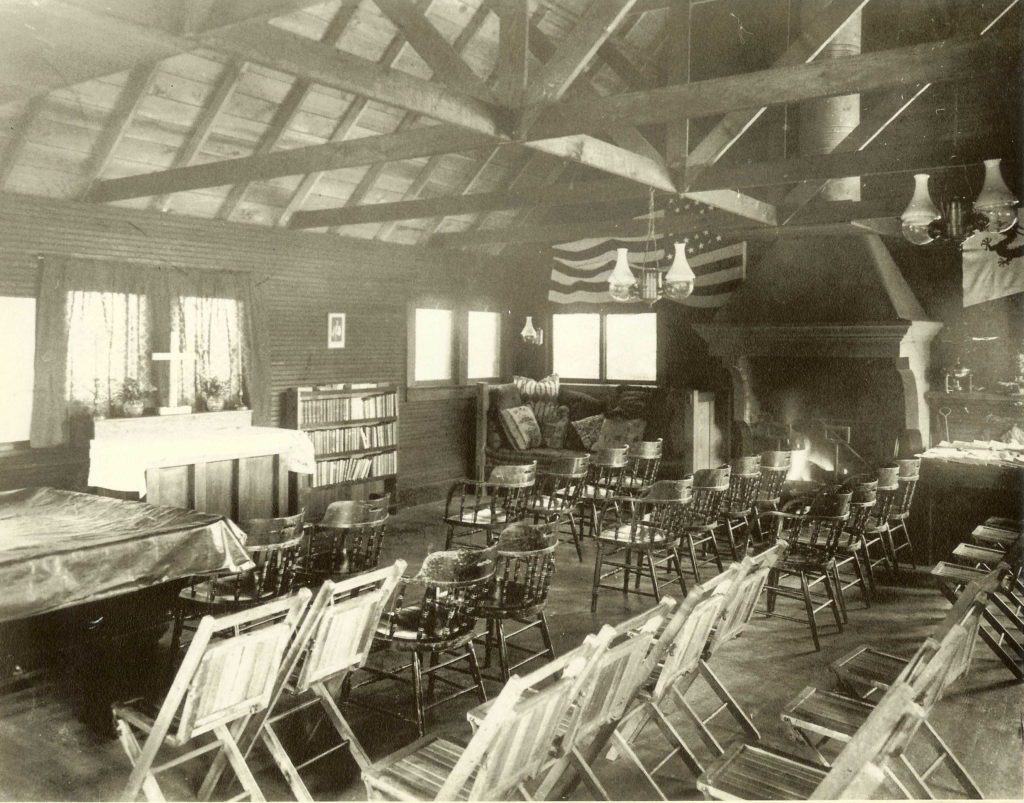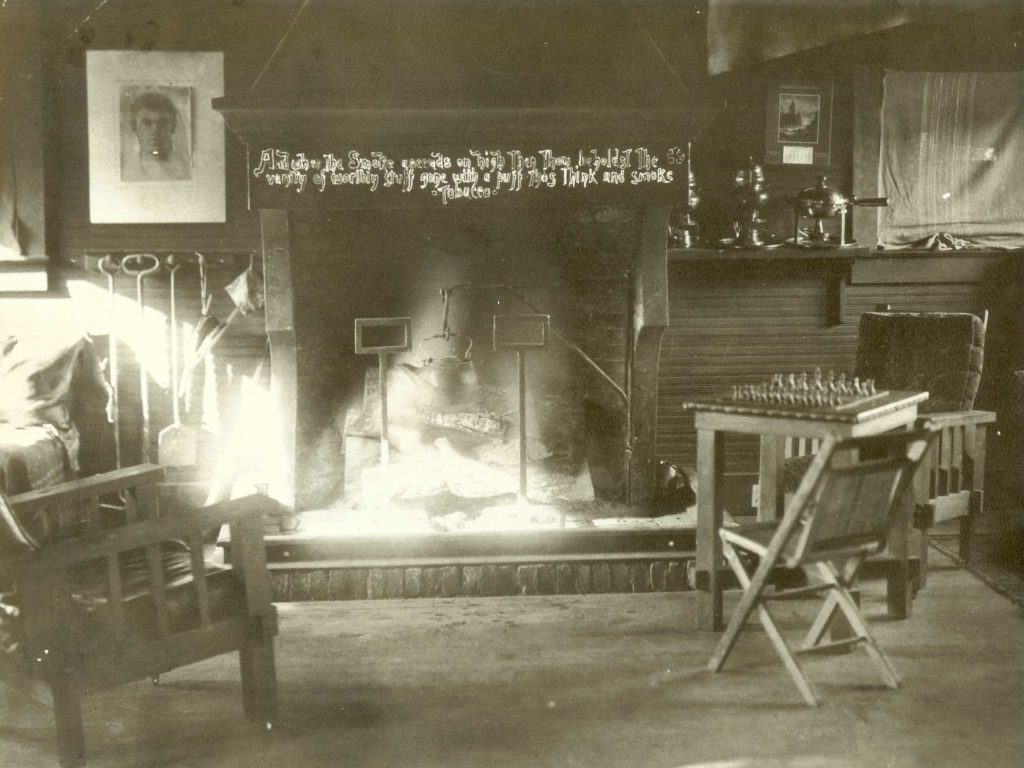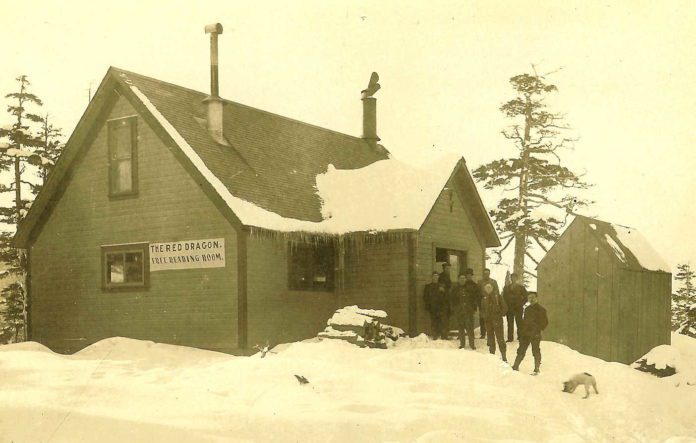The Red Dragon, designed as a multipurpose mission center, might be one of Cordova’s most historic properties. The Reverend E. P. Newton, as he was walking on a wintry eve in December of 1907, decided this burgeoning railroad town needed a place for ‘activities’ other than a saloon!
The Reverend’s vision did come true on July 14, 1908, but he had to wait; ironically, he was outbid by the owner of the Northern Saloon for a pile of scarce lumber!

“The clubhouse is a plain, well-built frame building, 24’x 36’ in size, one room, and a porch entrance. Its center of life is the open fireplace, kept burning for cheer when a large stove is also in commission for warmth. There are easy chairs, a large davenport and couches with pillows, a large table stocked with magazines and writing materials, some 600 volumes on the shelves, four card tables, chess and other games, boxing gloves, a piano, and a pool table. On Sundays: presto, an altar is lowered from a landing above the rafters, things are whisked aside, and the place is ordered for services and Sunday school.”
The Red Dragon went on to serve as Cordova’s first lending library and was placed on the National Register of Historic Places in 1982. Today, it still serves as a clubhouse of sorts, rented by the Parish Vestry for community gatherings and a place of shelter.

As the City of Cordova begins preparations for the revamping of Second Street, the folks at the museum have been assisting the State Office of History and Preservation as well as the Alaska Department of Transportation in researching the historic areas of Second Street. Over the next few months, the Museum will share some of the stories of those buildings we see every day and their unique history.
These photos are from the collection of the Cordova Historical Society. Much of the information for this article was gleaned from the book: From Fish and Copper Cordova’s Heritage and Buildings by Nicki Nielsen.






